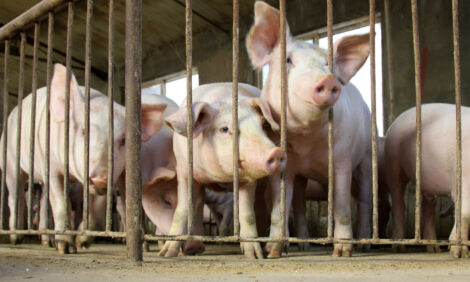



CME: US and Canadian Hog Producers Whip-Sawed
US - CME's Daily Livestock Report for 18th August 2008.The ebbs and flows of corn, soybean and hog prices have whip-sawed U.S. and Canadian hog producers and the cull sow market all year long and the changes in recent weeks are more of the same. Why is that important? Because what is going on in the U.S. and Canadian sow markets, and thus sow herds, will largely determine the number of market hogs that are available next summer. A few important factors in this market are:
- Canada’s sow buyout program has seen roughly 120,000 head signed up to be liquidated. Signups continue through September 1 and Canadian producers are still not making money so there could be some sows added to that number. The program had a goal or removing 150,000 sows. There are some producers in Canada that have liquidated their sow herds but not signed up for the government program because they did not want to commit to being out of the business for 3 years. The program caused imports of cull sows from Canada to fall sharply from mid-April onward. On April 19, YTD imports of sows from Canada were roughly 28,000 head (14.5%) higher than in 2007. As of August 9, YTD imports were 1,200 (0.3%) FEWER than last year. Statistics Canada will release its estimate of July 1 hog numbers, including the size of the sow herd, on Tuesday, August 19.
- U.S. sow slaughter has been 9.3% higher so far this year and, at this point in time given the data cited above regarding Canadian cull sows, all of that increase has been comprised of U.S. sows. Readers should note that sow slaughter data are always 2 weeks in arrears. The most recent data in the graph at top right are for the week that ended August 2. That run of 67,574 was nearly 11,000 smaller than the peak number back on June 28 and, given what has happened to sow prices, may be the largest number we see for awhile. In Friday’s edition, we mentioned that U.S. sow slaughter for the week ending August 2 was 24% larger than one year ago. That percentage is a bit misleading, since it compares the 67,574 head of August 2, 2008 to an abnormally low weekly number one year ago.
As can be seen in the lower chart, sow prices have exploded in the past three weeks to reach their highest
level of the year and surpass both last year’s price and the five year average. Our contacts indicate that sows
are simply not available since corn and soybean prices fell dramatically during July and hog prices have rallied
to annual highs in recent weeks. That makes sense — especially given the fact that producers with production
parameters commensurate with those used by Iowa State University to estimate breakeven costs can
lock in profitable feed and hog price combinations for all but 5 of the next 16 months. The liquidation signals
are not nearly as strong as they were just a few weeks ago.
In addition, the prices of sow product alternatives have risen dramatically. A large portion of sow
product goes into sausage of one variety or another. Therefore, prices of 72% lean trimmings, 42% lean trimmings
and fat are important for the sow value/pricing equation. 72% trim was quoted at $1.07/lb. last week.
The same product averaged $0.51/lb. for all of 2007 and was below $0.50/lb. as recently as April.









